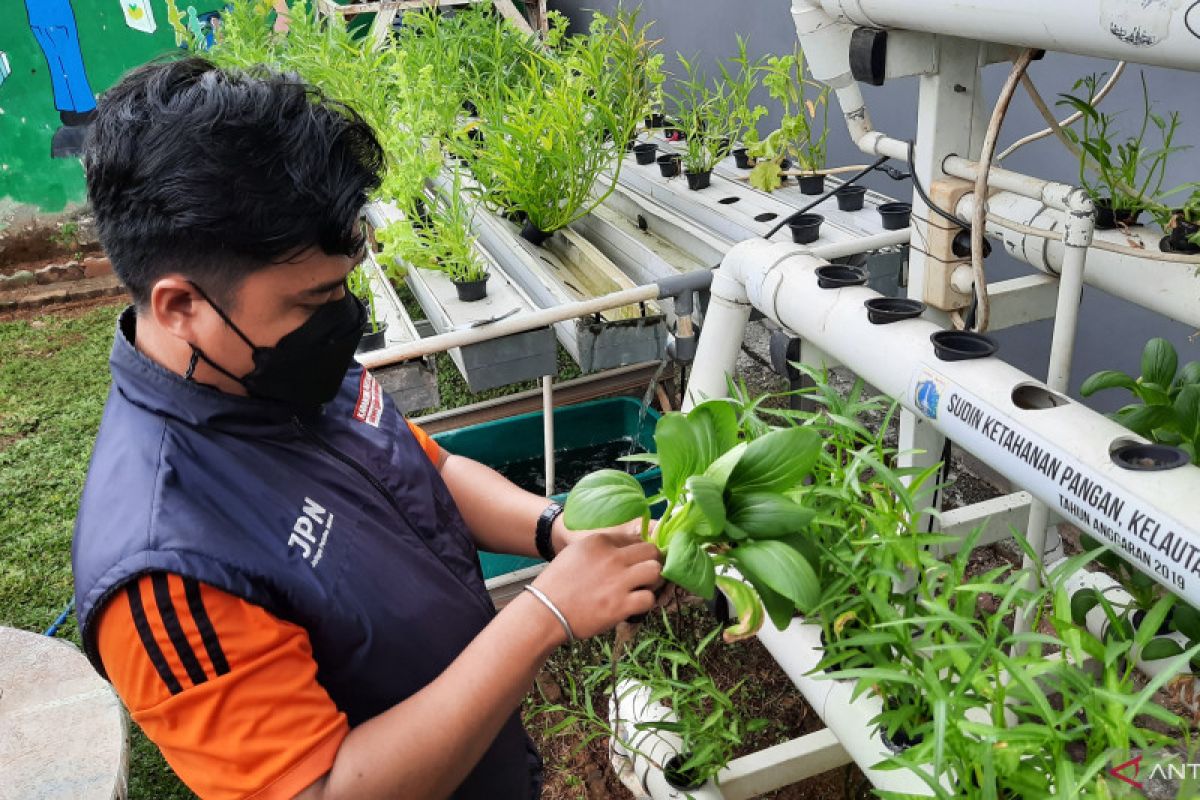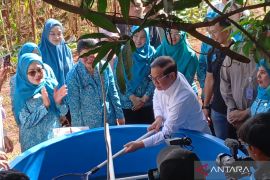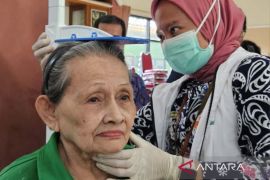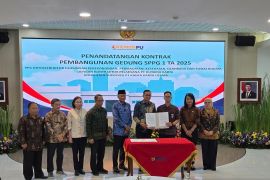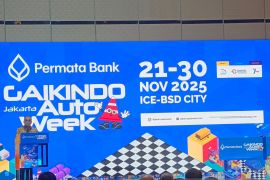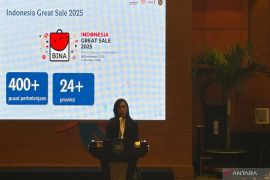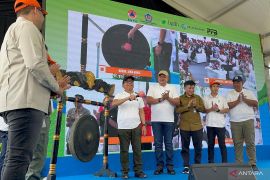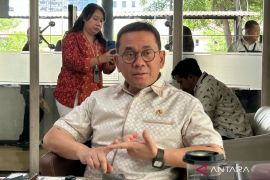Rusyadi moistened the mineral wool with running water, while Syahputra took out bok choy seedlings from storage. Sitting opposite each other, the two made a pattern of lines to form small squares on the wool.
Then they each took a stick to punch holes in the squares and placed the bok choy seeds. After each planting the seeds, the two put the seed container in a place that was not exposed to sunlight.
Syahputra and Rusyadi have been consulting La Ode Hardian (32), head of the "Karang Taruna" youth organization of Kebon Baru village, Tebet, South Jakarta, about urban farming.
Urban agriculture using hydroponic cultivation methods has been developing in the area, especially RW04 (Hamlet 04), since three years ago, thanks to the efforts of members of the Kebon Baru Karang Taruna.
The land they use for their hydroponic activities is a 9x8 sq. m (square meter) vacant lot on D3 Street No.6, RT09/RW04. They are even using the roofs of buildings.
In addition to bok choy, they have been growing water spinach (kangkung) and spinach. According to Hardian, such vegetables are often interesting to people as they are easy to cultivate.
He said he chose the hydroponic method because it is easy, especially for young people. Hydroponic cultivation utilizes water without soil to grow plants, but focuses on fulfilling the nutritional needs of plants, he explained.
"I see young people who did not know about farming; hydroponics is one of the easiest answers they can comprehend," Hardian, who studied agriculture at Halu Oleo University, Kendari, Southeast Sulawesi, said.
The tools needed for hydroponic gardening are racks for installation, rock wool as the planting medium, net pots, and water channels. For hydroponic cultivation, seeds first need to be planted on wet rock wool and allowed one to two days to germinate. Afterward, the seedlings are planted in net pots and placed on a shelf.
"The guys tend to be lazy of the seeding (process). It can make the eyes watery," he remarked.
For approximately 20–30 days, at least once a day, dirty water is replaced and necessary nutrients are added to the plants.
Young people do not take a long time to learn hydroponic farming, Hardian revealed. Instead of theory, hands-on practice makes it easy for them to understand the process.
Other than Syahputra and Rusyadi, there are more than 30 Kebon Baru residents aged 13–27 who are members of Karang Taruna.
Some of them are junior high school students and some are already working. Since the COVID-19 pandemic, not all Karang Taruna members have been able to devote a lot of time to farming.
As a result, of the 14 RWs in Kebon Baru village, only 8 RWs have remained active in urban farming activities.
According to data from the Jakarta Provincial Food, Maritime, and Agriculture Security Office, in 2021, there were as many as 735 urban farming locations in the capital, and 269 of them were in South Jakarta.
In terms of cultivation methods, hydroponics ranked first in Jakarta, with it being practiced at a total of 175 locations.
Urban farming activists in the 41–50 age group accounted for 37 percent of the farmers, followed by activists aged above 50 (35.5 percent), and those in the 31–40 age range (19.5 percent). Meanwhile, the proportion of agricultural activists under the age of 30 stood at 8 percent.
Related news: Suppress stunting rate through hydroponic fish, vegetable cultivation
Related news: Ciliwung care movement launches river ecotourism, edutourism
Potential of urban farming in Kebon Baru
Hardian said the vegetables he and his team grow are usually sold at two well-known supermarkets in Jakarta for a price of Rp7,500–Rp8,500 per 250 grams.
The harvested vegetables are also distributed to children with poor nutrition in Kebon Baru village once a month.
Hardian's team also processes vegetable products into juices, nuggets, and smoothies.
In a month, the highest production usually comes from RW04, totaling up to 60 kg of vegetables harvested from two thousand pots.
Currently, Hardian's team is working with the South Jakarta Food, Maritime, and Agriculture Security Service Unit to develop an application called "Toko Urban Farming Jakarta" or TUFJ.
Through this application, the harvested vegetables would be sold for commercial or business purposes.
According to the plan, Hardian said, the application’s management will be assigned to members of the farmer group, New Garden Hydro, that will focus on the business side.
"When we use the application, we will not only sell vegetables. All business actors in the fields of agriculture, fisheries, and plantations will be able to trade there. We will manage the app. They will fund (the making of the application), we will not pay, we will just ready the human resources," he explained.
Meanwhile, head of the economic and development section of Kebon Baru village, Sismintarsih, lauded the enthusiasm of the community, especially young people, to continue gardening amid the limited size of land.
He said that there are a number of residents in RW03 and RW14 who are also environmental activists helping implement urban farming.
Related news: Urban farming can solve pandemic-triggered food issues: LIPI
Related news: Urban farming plays role in lowering Surabaya's poverty rate
Translator: Lia S, Kenzu T
Editor: Sri Haryati
Copyright © ANTARA 2022
